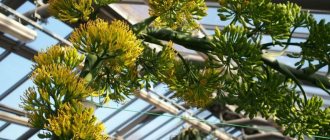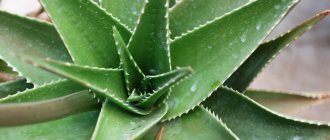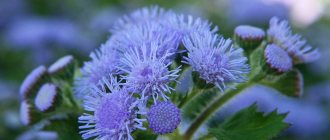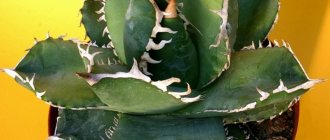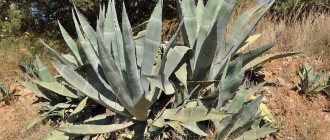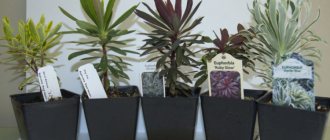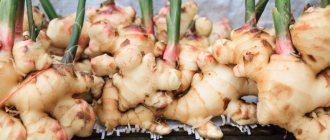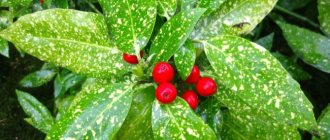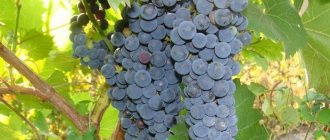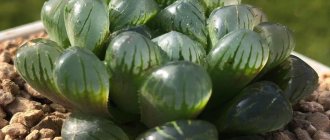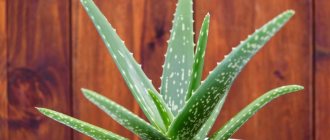But one day a terrible thunderstorm broke out, and lightning struck a tall agave. And then juice began to flow from her. It turned out to be incredibly tasty and sweet.
People were amazed by what happened and decided that this was a gift that the gods had given them. The Indians widely used this plant for various purposes, but did not grow it specifically: their homes were surrounded by entire thickets of wild agave.
They began to cultivate it only in 1758 , it was then that the King of Spain granted numerous lands in Mexico to Don José de Guervo, who subsequently mastered the production of the first alcoholic beverages .
At that time, various species were grown (including Agave americana), empirically those most suitable for the production of drinks; those species that did not give the desired result were uprooted and not planted again.
The planter himself lived near the village of tequila , so he called the drink he invented “tequila”, and subsequently, most suitable for wine production, received another name tequila , this was the type we are considering.
Is Blue Agave a Cactus or Not?
Because of the plant's prickly leaves and sharp thorns, many people believe that agave is a cactus. But that's not true. Blue agave - what is it? The plant is one of more than 300 species of agave. It belongs to the genus Evergreen stemless of the Agave family. It has nothing to do with cacti or aloe, which agave is very similar to.
Blue agave
On a note! In addition to blue agave, American, striped and Yellow agave are also used for home cultivation. They differ in the shape and color of the leaves.
Brief description of what the flower looks like
Under natural conditions, blue agave is grown in Mexico. This is a large plant with elongated arrow-shaped fleshy leaves up to 2 m long. After 5 years, the agave produces a peduncle 5-10 m high, at the end of which beautiful bright yellow flowers bloom. They are pollinated at night by local bats. After flowering, several thousand seeds are formed, and the plant itself dies.
To obtain tequila, the plant is required to be 8-12 years old, so locals cut down the flower stalks, preventing them from growing and blooming, in order to preserve the strength of the agave for further growth. The cut shoots are immediately stuck into the ground, and a new flower grows from them.
At home, the crop grows smaller, but not much – the length of the leaves can reach 1 meter. The edges of the leaves are covered with spines, and at the tip of the leaf there is a long and sharp needle. Therefore, the place where the pot will be located must be spacious and protected from children and animals. The hard needle at the end of the sheet is cut off for safety reasons. This does not harm the plant. Agava blue leaves are thick and succulent, covered with a waxy coating of smoky blue color.
Uses of blue agave
Otherwise, blue agave is called tequila lily (Agáve tequilána), because the famous drink is produced from this plant. To make Mexican vodka, agave is grown for 12 years. Only the middle from which the leaves grow is suitable for use, but this compaction can weigh up to 90 kg. All other parts (leaves, roots and peduncles) are cut off, and the core is sent for processing to produce tequila.
On a note! Agave leaves contain substances that increase the effectiveness of medications. They are used to make drugs that stimulate metabolic processes, normalize metabolism and reduce intoxication. In cosmetology, the juice and pulp of the leaves are used as components of creams and lotions. Agave fibers are also used to make textiles, fishing nets, ropes and even ropes.
Origin, beneficial properties
Legend has it that the wonderful taste of succulent juice was first discovered by Mexican Indians. For a long time they did not understand what large bushes were surrounding them, until a thunderstorm occurred, when lightning cut several leaves and sap came out.
Purposeful cultivation of agave began thanks to the Spaniards in the early 18th century. It was they who discovered the succulent as a raw material for the production of alcoholic beverages.
Another name for the blue bush that was left over from the Spaniards and is used today is “tequila.”
In addition to raw materials for drinks, blue agave is a very useful representative of the flora for humans. The leaves and juice contain:
- vitamins A, B, E, D and K;
- magnesium and sodium, phosphorus, calcium;
- resins, essential oils.
The succulent has a number of healing effects:
- diuretic;
- laxative;
- antipyretic;
- antiseptic;
- painkillers;
- expectorant.
For burns, wounds and other skin damage, a cut of the leaf plate is used as an emergency aid. The
so-called agave cactus helps with heartburn, with bloating, for the treatment of a number of diseases, including bronchitis, tuberculosis, radiculitis, and dermatological diseases.
The juice is included in many medicines.
Caring for blue agave at home
Agave, plant - what it is and how it blooms
Blue agave grows in dry, hot climates, at altitudes of more than 1500 m, so when growing at home you will need to create a favorable climate for it.
Illumination and temperature conditions
The flower is light-loving and requires long daylight hours, and in the spring-autumn period, when there is not enough sun, it needs additional lighting. In this case, direct sunlight is not necessary. In the summer, if possible, the flower is taken outside, into the garden or onto the balcony.
Home flower requires long-term lighting
No heat can scare the succulent fruit; it is a heat-loving plant. In winter, the flower should be kept in a winter garden or on a veranda with an air temperature of +10... +12 degrees. At the same time, it needs lighting for at least 16 hours.
Watering rules and humidity
The plant needs dry, warm air. It does not need spraying; on the contrary, if moisture gets into the rosette of leaves, the plant may get sick. To remove dust, wipe the leaves with a damp sponge. The flower will not refuse ventilation and it is not afraid of drafts either.
You need to water the agave as the earthen clod dries out. Due to increased soil or air humidity, the agave rots and dies. In winter, the plant should be watered moderately, once a month. Water for irrigation is taken from settled or melted water, and always at room temperature.
Fertilizing and soil quality
The plant is undemanding to the soil, since under natural conditions agave grows in clay-sandy soils and feels great. The most important thing is to pour good drainage into the pot so that the moisture does not stagnate. Any material is suitable for this (expanded clay, crushed stone, broken brick and even crushed foam).
Note! Agave prefers highly alkaline soil. Usually a mixture of garden soil, coarse sand and peat is poured into the pot.
As a top dressing, you can use universal fertilizer for succulents, but it must be used not according to the instructions, but diluted at least 2 times. The plant needs feeding only in the summer, during the growth period. Fertilize it no more than 2-3 times a month.
You can feed it with fertilizer for succulents
Methods of application
All parts of agave can be used from a practical point of view:
- The stems are used to produce a particularly strong fiber - sisal, which, depending on its density, is suitable for making clothing, building materials, paper, and much more. etc..
- The roots are used in various fields of medicine.
- The healing juice of the leaves is the basis for the famous alcoholic drink tequila, or is used in the food industry as a sweetener.
- Agave leaves, flowers and large flower stalks are often eaten fried.
Agave is a plant whose medicinal properties have been known for a long time; many Indian tribes, including the Aztecs and Mayans, called it “a gift from the gods” and used it to prepare medicines for a wide variety of diseases. Currently, many hormonal drugs and a whole group of contraceptives are synthesized from the leaves of Agave mexican and other members of the family. The medicinal properties of indoor agave are absolutely identical to those of wild-growing species.
Agave fiber is highly valued throughout the world and is often used for economic purposes. Ropes, strings, fishing nets, interior decorative elements and clothing are not all the items that are made from sisal.
Depending on which agave family the plant is from, you can determine the features of use.
screenshot_9.jpg
Flowering and dormant period of perennial
Agave - what kind of houseplant is it?
Agave cactus blooms at home very rarely, almost never. The flowering of a succulent can only be seen in botanical gardens, where this event also does not occur often. Indoor agave can bloom even after 15-20 years of life. After flowering, it slowly dies, leaving thousands of seeds. But the flower is very impressive in the form of a tall panicle covered with bright yellow, funnel-shaped flowers.
The bloom is as powerful as the plant
Agave's dormant period begins in winter, when it needs low temperatures, rare watering (once a month) and no fertilizer. Only the lighting cannot be reduced at this time, without necessarily adding artificial light.
Briefly about the main thing
Agave, what it is, what it is eaten with and whether it is eaten at all - these are the questions that concern many novice gardeners. To begin with, one of the varieties of perennial succulents is the exotic beauty agave, whose homeland is considered to be Mexico, as well as South American countries. In general, the answer to the question of where agave grows is - wherever there is a lot of heat and sunlight. The plant is actively cultivated as an ornamental, and edible varieties of agave are also often found.
Domestic plant growers in temperate and northern regions have become accustomed to growing indoor agave, which feels great on the windowsill, and for residents of the hot south it is quite possible to find fairly large specimens in the Crimea or on the coast of the Krasnodar Territory.
screenshot_5.jpg
Reproduction of Mexican agave
What are gerbera flowers - what they look like and how they grow
Growing blue Mexican agave at home is not difficult. Several methods are used for this.
Seeds
Succulent seeds have excellent germination rate. They can be sown at any time of the year, but the optimal period is from late February to early March. To grow a seedling from seeds you need:
- Prepare a container with a lid and fill it with peat-sand mixture.
- Sow the seeds to a depth of 0.5 cm.
- Provide a stable temperature for seedlings - +22... +25 degrees.
- The container with the fragile sprouts that appeared after a week should be ventilated daily.
After 3 weeks, the first leaf will appear on the sprout, and after another 3 weeks, the second one will appear. After about 3.5–4 months, the seedling will have 3-4 leaves up to 4 cm in length and developed lateral roots, then it can be transplanted into a new pot.
Germination of seeds
Children
The simplest method of reproduction is by children. Agave releases them every year.
The mother plant is removed from the pot, the daughter shoots are carefully separated and left for 2-3 hours. The cut must dry out, otherwise it may rot without taking root. At this time, the mother plant is returned to the pot. Children are planted in soil or wet sand and left there for 3 days. After this, the seedling can be watered.
Agave babies
Babies can be deposited at any warm time of the year. At first, it is not recommended to expose the pot with the seedling to the sun; the optimal place is a window facing east.
Leaf
Agave can be propagated by leaf in the same way. The leaf is broken off at the base and left to dry. You can sprinkle it with ash. After 2-3 hours, the leaf is inserted into the soil, where in 2-3 weeks it will sprout the first roots. In water, agave leaves do not develop roots; from excess moisture they begin to rot.
Peduncle
Under natural conditions, on agave plantations, the plant is propagated by flower stalks, cutting down the palm tree at the base and sticking it immediately into the ground. Since at home the flower almost never produces flower stalks, so it is better to use the methods described above.
Transfer
How to replant an agave? Replanting will allow the plant to send out new shoots and shoots, as well as ventilate the root system and avoid acidification of the soil. For young shoots, replanting is of great importance and is therefore done once a year. In older specimens, soil change occurs every two to three years or as the flower grows. Drainage is required to retain moisture. The soil itself is mixed in the following proportions:
- one part is coarse sand;
- another leafy one;
- the rest is filled with a clay-turf mixture, approximately three-fifths of the total amount.
It is better to take wide pots as a flowerpot, since the size of the rosette is quite large. The root does not need to be deeply buried in the ground; it is enough to leave it on the surface. It is better to secure the flower rosette itself with pebbles. Sprinkle with sand, gravel or shells. This form of planting will not only allow the roots to be in their usual environment, but will also provide moisture retention and protection from temperature changes.
Growing problems, diseases and pests
Despite the fact that blue agave is an unpretentious plant and tolerates any conditions except excess moisture, some problems may still arise when growing it at home:
- The plant is frozen and not growing. Perhaps the plant does not have enough space or the soil is not suitable for it. Try replacing the pot with another, larger one, filling it with suitable soil and moving it to a larger room.
- The leaves became small and the plant became elongated. This means that the agave is not getting enough light. It is necessary to install additional lighting using a fluorescent lamp.
- The stem or root has begun to rot. If this happens in winter, the plant is cold, or the humidity of the air and soil is increased. Exhaustion can also occur due to too high temperatures during wintering. It is necessary to stop watering and move the agave to a dry room with a temperature of +8... +10 degrees. In summer, rotting is possible when the soil is waterlogged due to lack of drainage. In this case, the plant is transplanted into another pot with special holes, filled with drainage 1/3 and the watering regime is observed.
Diseases and pests
Blue agave has low immunity to fungal diseases and pests. If there is excess moisture, the flower immediately begins to rot; both the leaves and the root system become covered with brown and black spots.
Pest infestation
Among the pests that attack the agave cactus, weevil larvae, as well as scale insects and thrips, cause particular harm. The plant needs to create favorable conditions, control the humidity in the room and soil in the pot, and check the condition of the flower. If signs of disease or pests are detected, the agave is transplanted into disinfected soil, pre-treated with insecticides and fungicides.
Blue agave is an exotic, powerful plant that does not require special care. The only difficulty may be creating conditions for wintering, when the plant requires low indoor temperatures, but also needs long daylight hours. Agave is very easy to propagate, so you can quickly create your own Mexican corner.
Description of the species
An evergreen succulent from the asparagus family, this is how many encyclopedias and other reliable sources of information characterize agave. The plant has a fairly strong, but shortened stem, densely planted with massive, thick leaves, which allows it to form a spreading, dense rosette, reaching a diameter of up to 3-5 m. The height of wild varieties reaches two meters, while domestic agave is a small and quite acceptable plant for growing on the window.
Under favorable conditions, foliage actively accumulates water, which allows the crop to survive for a long time without moisture and survive in the most difficult arid areas.
It is very interesting how the agave blooms, since it only happens once in its entire life. Adult plants, approximately in the sixth to eighth year, throw out powerful, strong flower stalks up to 10-12 m long, dotted with many bright sunny yellow buds. At the same time, the mother plant dies, because the agave gives all its strength to the flower, but new, juicy, fresh shoots appear from the rosette from the root. Blooming agave is an indescribable, stunning sight that everyone should see at least once.
Outwardly very similar to aloe or cactus, agave still has a number of unique features, which allows it to be classified as a separate species. Unlike cacti, agave has no needles and has distinct fleshy leaves, the color of which can vary. In general, the color of agave is a topic for a separate article; the palette is truly impressive and mesmerizing at first sight. The variegated varieties with a contrasting border along the edge of the leaf look especially impressive - it’s very beautiful.
screenshot_6.jpg
Classification
Tequila is divided according to the level of agave content and degree of aging. The premium drink is made from 100% plant juice, but the specific taste and smell seem unusual to Europeans. TequilaMixta, which consists of 49% additives - sugar syrups, aromatic extracts, is popular due to its low price and variety of flavors.
Blue agave, growing on plantations in Mexico, is included in the UNESCO World Heritage List, as are the factories that process it. Every year in November, a festival is organized in the city of Tequila, the unofficial capital of the national alcoholic drink. On the first day, each guest is offered a free taste and evaluation of the exquisite varieties of tequila displayed by the producers. Agave, known to the ancient Aztecs, remains a symbol and an integral part of Mexican life and cultural traditions.
Useful properties and uses of agave syrup
Benefits and harms of agave juice: methods of use
Making tequila
Production consists of a number of stages:
- dividing the core into parts;
- heat treatment at a temperature of 70°C;
- grinding;
- squeezing juice from pulp using a press;
- fermentation in special fermentation containers for 7-14 days;
- double distillation process.
From seven kilograms of agave, up to one liter of drink is obtained. After distillation, tequila is either bottled or placed in oak barrels for further aging. The most valuable varieties are up to ten years old and radically change the taste and aroma, acquiring subtle woody notes.
